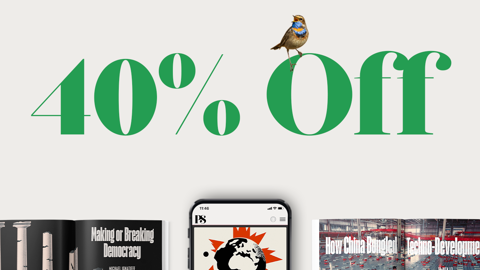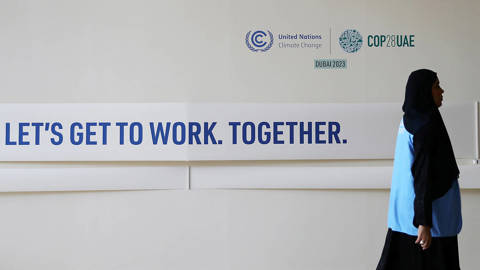In general, companion animals – the ones we keep around the house – are treated far better than factory-farmed pigs, cows, and chickens. Nevertheless, despite the more positive attitudes people have toward dogs and cats, many of them lead miserable lives.
PRINCETON – There are about 184 million dogs and cats in the United States; two-thirds of all US households include an animal, popularly known as “pets.” But animal advocates regard that term as demeaning, and prefer “companion animal.” In fact, in many homes, dogs or cats are regarded as members of the family. They are provided with everything they might need or enjoy, and much else besides, including fancy treats and clothing.
Spending on companion animals in the US alone has been growing rapidly over the past decade, rising from an already very substantial $43 billion in 2008 to an estimated $72 billion this year. And similar trends are evident elsewhere. Ownership of dogs and cats in China, for example, was estimated at 100 million in 2015, and rising.
Large as these numbers may seem, they are insignificant compared to the 65 billion animals worldwide raised for food each year. In general, companion animals are treated far better than factory-farmed pigs, cows, and chickens. In most affluent countries, if you were to confine dogs for months in cages like the stalls in which pigs on factory farms are often kept, you would be liable to prosecution.
Nevertheless, despite the more positive attitudes people have toward dogs and cats, many of them lead miserable lives. Dogs, unlike cats, are social animals, and generally do not do well without company. As Karen Dawn points out in her book Thanking the Monkey, solitary confinement is considered cruel punishment for humans. But it is even crueler for a pack animal. Too often our companion animals are, in her words, “slaves to love.”
Dogs from breeds that were used to hunt or guard sheep often suffer from being unable to follow their instincts. Other breeds have been shaped to please us, often at severe cost to the animals themselves. Bulldogs suffer several health problems, including breathing difficulties, because of the way they have been bred, and Dalmatians often cannot hear, because the genes that produce their desirable spots also can produce deafness. One in every four dogs suffers from separation anxiety, most often from being left alone for long periods of time during the workweek.
Then there are specific problems when more exotic animals become fashionable pets. Keeping birds in cages that prevent them flying scarcely merits comment. In China, a recent craze was pygmy marmosets, also known as “finger monkeys” because they are small enough to sit on your finger. People may buy just one, as a novelty, but they are highly social animals, normally living in a group, and they will suffer and die if kept on their own, no matter how much attention they receive from humans.
Even if these problems could be overcome, large populations of companion animals have other consequences. High demand has led to the rise of large-scale commercial puppy breeders, who frequently keep dogs in horrible conditions. Cute puppies and kittens bought on impulse may be abandoned when they grow older and become less appealing. Cats, whether abandoned or allowed outside, regularly kill birds and small mammals. One study estimated that cats, most of them without owners, kill 1-4 billion birds and 6-22 billion small mammals each year in the US alone. The figures have been challenged, but no one disputes that the number is large and that, in some areas, it is having an impact on the survival of other species.
Then there is the contribution of all these meat-eating companion animals to climate change. According to UCLA geography professor Gregory Okin, if all the dogs and cats in the U.S. comprised a separate country, that country would rank fifth in the world in meat consumption, behind only Russia, Brazil, the United States and China. Given the high level of greenhouse-gas emissions produced by meat production, that is a very substantial additional contribution to climate change. Okin suggests that it would be desirable for people to switch to smaller, herbivorous pets. (From personal experience, we can recommend rats as lovable, clean companion animals who do well on a diet of grains.)
If you don’t have a companion animal, but are thinking of getting one, we recommend you think not just twice, but three times. Ask yourself: will it be good for me? Will it be good for the animal? Will it be good for the environment?
If, on the other hand, you already have a companion animal, ask yourself whether you are taking her, his, or their real needs into account. You may think that you love them unconditionally, and that is good, but you may not know as much about their real nature and needs as you think you do. Uninformed love, no matter how good your intentions, may not be what your companion animal needs. And think about how you can lessen their harmful impact on the environment.
Find out more, and don’t try to mold animals into what you want them to be. They have lives of their own to lead. They do not exist to please you.











PRINCETON – There are about 184 million dogs and cats in the United States; two-thirds of all US households include an animal, popularly known as “pets.” But animal advocates regard that term as demeaning, and prefer “companion animal.” In fact, in many homes, dogs or cats are regarded as members of the family. They are provided with everything they might need or enjoy, and much else besides, including fancy treats and clothing.
Spending on companion animals in the US alone has been growing rapidly over the past decade, rising from an already very substantial $43 billion in 2008 to an estimated $72 billion this year. And similar trends are evident elsewhere. Ownership of dogs and cats in China, for example, was estimated at 100 million in 2015, and rising.
Large as these numbers may seem, they are insignificant compared to the 65 billion animals worldwide raised for food each year. In general, companion animals are treated far better than factory-farmed pigs, cows, and chickens. In most affluent countries, if you were to confine dogs for months in cages like the stalls in which pigs on factory farms are often kept, you would be liable to prosecution.
Nevertheless, despite the more positive attitudes people have toward dogs and cats, many of them lead miserable lives. Dogs, unlike cats, are social animals, and generally do not do well without company. As Karen Dawn points out in her book Thanking the Monkey, solitary confinement is considered cruel punishment for humans. But it is even crueler for a pack animal. Too often our companion animals are, in her words, “slaves to love.”
Dogs from breeds that were used to hunt or guard sheep often suffer from being unable to follow their instincts. Other breeds have been shaped to please us, often at severe cost to the animals themselves. Bulldogs suffer several health problems, including breathing difficulties, because of the way they have been bred, and Dalmatians often cannot hear, because the genes that produce their desirable spots also can produce deafness. One in every four dogs suffers from separation anxiety, most often from being left alone for long periods of time during the workweek.
Then there are specific problems when more exotic animals become fashionable pets. Keeping birds in cages that prevent them flying scarcely merits comment. In China, a recent craze was pygmy marmosets, also known as “finger monkeys” because they are small enough to sit on your finger. People may buy just one, as a novelty, but they are highly social animals, normally living in a group, and they will suffer and die if kept on their own, no matter how much attention they receive from humans.
SPRING SALE: Save 40% on all new Digital or Digital Plus subscriptions
Subscribe now to gain greater access to Project Syndicate – including every commentary and our entire On Point suite of subscriber-exclusive content – starting at just $49.99.
Subscribe Now
Even if these problems could be overcome, large populations of companion animals have other consequences. High demand has led to the rise of large-scale commercial puppy breeders, who frequently keep dogs in horrible conditions. Cute puppies and kittens bought on impulse may be abandoned when they grow older and become less appealing. Cats, whether abandoned or allowed outside, regularly kill birds and small mammals. One study estimated that cats, most of them without owners, kill 1-4 billion birds and 6-22 billion small mammals each year in the US alone. The figures have been challenged, but no one disputes that the number is large and that, in some areas, it is having an impact on the survival of other species.
Then there is the contribution of all these meat-eating companion animals to climate change. According to UCLA geography professor Gregory Okin, if all the dogs and cats in the U.S. comprised a separate country, that country would rank fifth in the world in meat consumption, behind only Russia, Brazil, the United States and China. Given the high level of greenhouse-gas emissions produced by meat production, that is a very substantial additional contribution to climate change. Okin suggests that it would be desirable for people to switch to smaller, herbivorous pets. (From personal experience, we can recommend rats as lovable, clean companion animals who do well on a diet of grains.)
If you don’t have a companion animal, but are thinking of getting one, we recommend you think not just twice, but three times. Ask yourself: will it be good for me? Will it be good for the animal? Will it be good for the environment?
If, on the other hand, you already have a companion animal, ask yourself whether you are taking her, his, or their real needs into account. You may think that you love them unconditionally, and that is good, but you may not know as much about their real nature and needs as you think you do. Uninformed love, no matter how good your intentions, may not be what your companion animal needs. And think about how you can lessen their harmful impact on the environment.
Find out more, and don’t try to mold animals into what you want them to be. They have lives of their own to lead. They do not exist to please you.